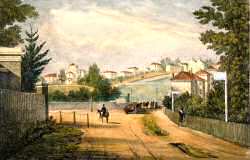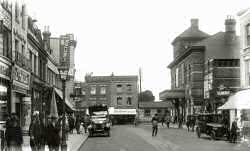History of Herne Hill
The name Herne Hill first appears in 1789, when the area consisted of woodland, farms and smallholdings.
Rocque’s map of 1745 shows the area around what is now Herne Hill Station as ‘Island Green’, reflections of the River Effra. Derivation is inconclusive but the present name may have come from a prominent Dulwich family, the Hernes.
In the 1780s Samuel Sanders bought part of the estate of the Manor of Milkwell fronting onto Denmark Hill.
Brockwell Park is Lambeth’s most impressive open space and still an impressive example of a country house in its grounds. The park was formerly the grounds of the home of John Blades a city glass manufacturer. The house known as Brockwell Hall was built 1813. In 1891 the London County Council bought the land to open as a public space, with additions in 1901. The park was laid out by J. J. Sexby to create a naturalised effect and includes a walled garden, a lido (1937) and the original Brockwell Hall.
In the early nineteenth century Herne Hill was affluent and semi-rural. Large villas in substantial grounds lined Herne Hill and Denmark Hill. The Ruskin family moved to Herne Hill in 1823 and John Ruskin lived in the area for most of his life.
Felix Mendelssohn was a regular visitor to another house on Denmark Hill, which was demolished to make way for Ruskin Park.
As was often the case, it was the railways that changed the area when they arrived in the 1860s.
The Suburban Village and General Dwellings Company built terraced houses in Milkwood, Lowden and adjacent roads, seen as innovative and modern by some but not by John Ruskin.
Inevitably, as London grew, large houses were demolished and replaced by terraces. Walter Besant lamented at the turn of the century: ‘The grounds of Herne Hill Lodge are cut up into the smallest type of suburban street. All the houses are new and empty’.
As the housing problems in North Lambeth became critical after the First World War, attempts were made to build estates in the south. Denmark Hill was thought by one angry inhabitant to be ‘quite unsuitable for people of the working classes’.
Parts of Herne Hill today have regained much of their former grandeur due to the spread of gentrification and its proximity to Dulwich.






